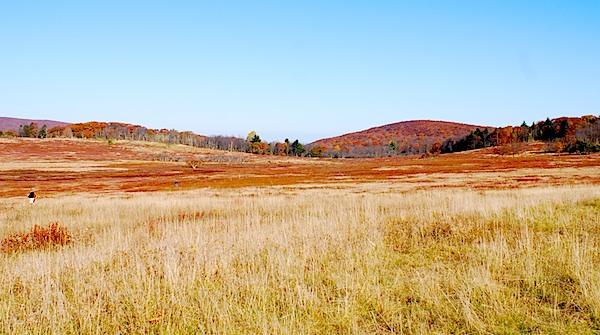
It likely will be a bit more expensive to visit places such as Big Meadows in Shenandoah National Park under plans for higher entrance fees/Kurt Repanshek
Are current entrance fees at Shenandoah National Park in Virginia reasonable? Not if Shenandoah is to continue as a "world-class park," according to Superintendent Jim Northrup.
The superintendent made the comment in a release announcing his plan to slightly tweak a proposal for higher entrance fees to spread that increase out a bit.
Based on comments received from the public, the proposed increases would take place in two phases. Under the revised plan, which still must be approved by National Park Service officials in Washington, D.C., an initial increase would take place on May 1, 2015, with a final increase taking place on January 1, 2017.
"We feel the proposed increase is appropriate and necessary to sustain a world-class park," Superintendent Northrup said. "The majority of people who commented on our proposal supported the increase, but many felt it was too great an increase to make all at once. Consequently, we have modified our proposal to phase in the increase over a two-year period. That will give our stakeholders more time to adjust to and plan for these increases."
The proposed entrance fees and schedule are as follows:
Pass Type
Current
May 1, 2015
January 1, 2017
Park Annual Pass
$30
$40
$50
Per Vehicle (1-7 days)
$10/$15
$20
$25
Per Person (1-7 days)
$8
$10
$10
Motorcycle (1-7 days)
$10
$15
$20
Entrance fees are not charged to persons under 16 years of age, or holders of the America the Beautiful National Parks and Federal Recreational Senior, Access, or Military passes.
Shenandoah officials do plan to move forward with a proposal to begin to charging a $10 per-person fee for visitors participating in special ranger-led van tours to Rapidan Camp, President Hoover's former retreat and a National Historic Landmark located within the park. Under the proposal, children 12 and under would not be charged.
The park staff has also decided to move the group campsite currently at Loft Mountain to an underutilized area at Dundo Picnic Grounds, reducing conflicts within the main campground. Two 20-person group sites will be established at Dundo. The cost per site will be $45 per night.
As a part of Shenandoah's planning process, staff received requests for day passes and reduced-cost passes for park neighbors. Park management considered a less-than-7-day pass, but it was determined to be infeasible. A discounted entrance fee rate for 'local' citizens is not permitted under the federal law that governs fee collection in national parks.



Comments
Can anyone explain why this is infeasible? This seems to me to be the most inequitable part of the entrance fee structure.
Good question, EC. Particularly for a park like Shenandoah, a weekend retreat of sorts for D.C. urban dwellers (I live halfway between the city and the park), a three-day pass would seem to make the most sense from a customer-service standpoint.
Having grown up in Mclean, it was one of my regular haunts.
I think what they meant by "infeasible" is that they can't treat locals and non-locals differently because it's federal land. But they could offer different entrance fee rates for different lengths of stay. Rocky Mountain NP in fact is proposing exactly that. As I have pointed out elsewhere I think that approach will likely add more to the cost of enforcement than it would net in increased revenue. I've never yet seen anybody checking for entrance fee compliance among visitors who are inside a park. It's assumed that you passed through the toll gate on the way in. Those few who come in for free because it's very early or very late or the toll-taker was on a potty break are not worth the expense of tracking down. A varying fee for one-day, three-day, and seven-day visitors is going to force them to do that. Somebody needs to put pencil to paper and calculate the cost/benefit before they go with such a plan.
Oh I understand the "locals" issue. But I don't see why variable days can't be accomodated. Everyone coming in stops at the gate. If they left and are re-entering, their receipt is checked. Everyone that is staying in accomodations or at a front-country campsite would need to show their receipt indicating their stay was still good. Neither of those would require any material incremental paper work or effort. About the only ones those wouldn't capture would be back country campers. Spot checks at trailheads or parking lots with fines for staying beyond your paid period should deter most from not paying for their stay.
There has go to be some other reason they aren't pursuing that path.